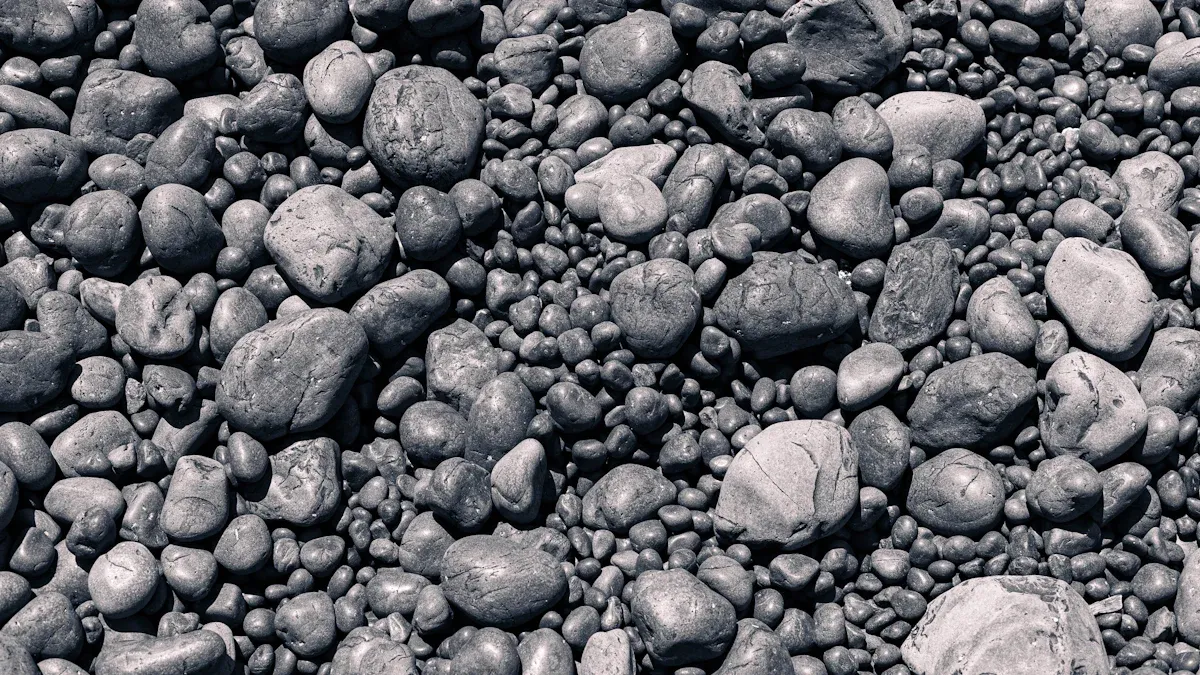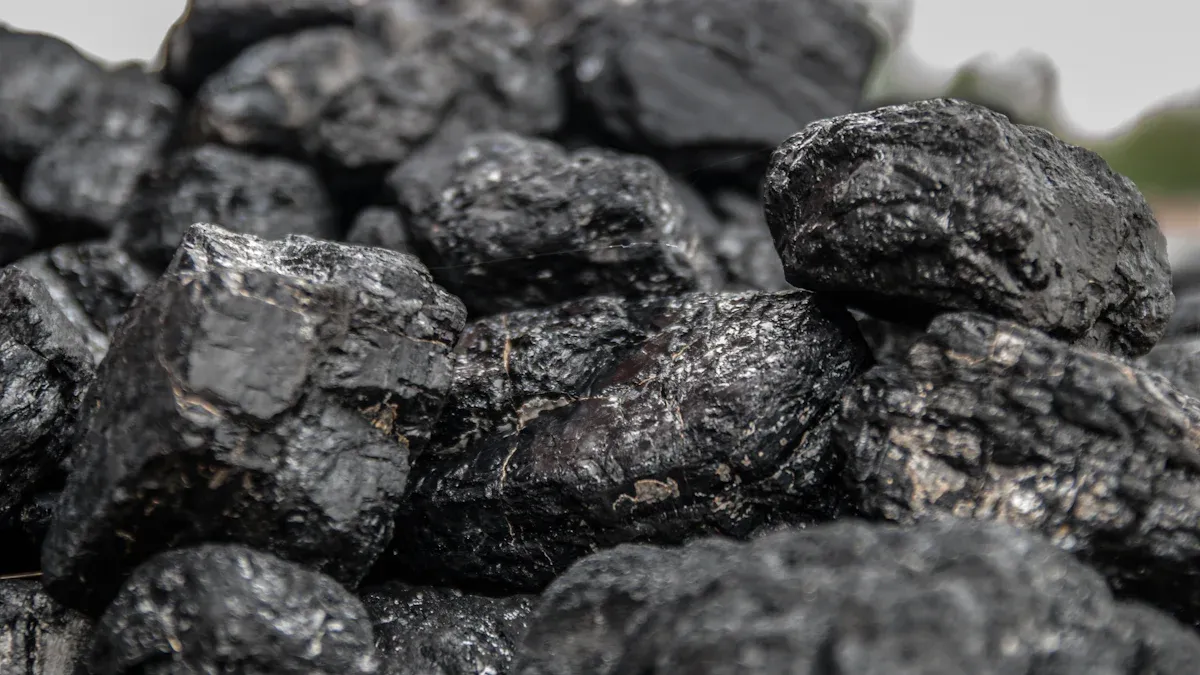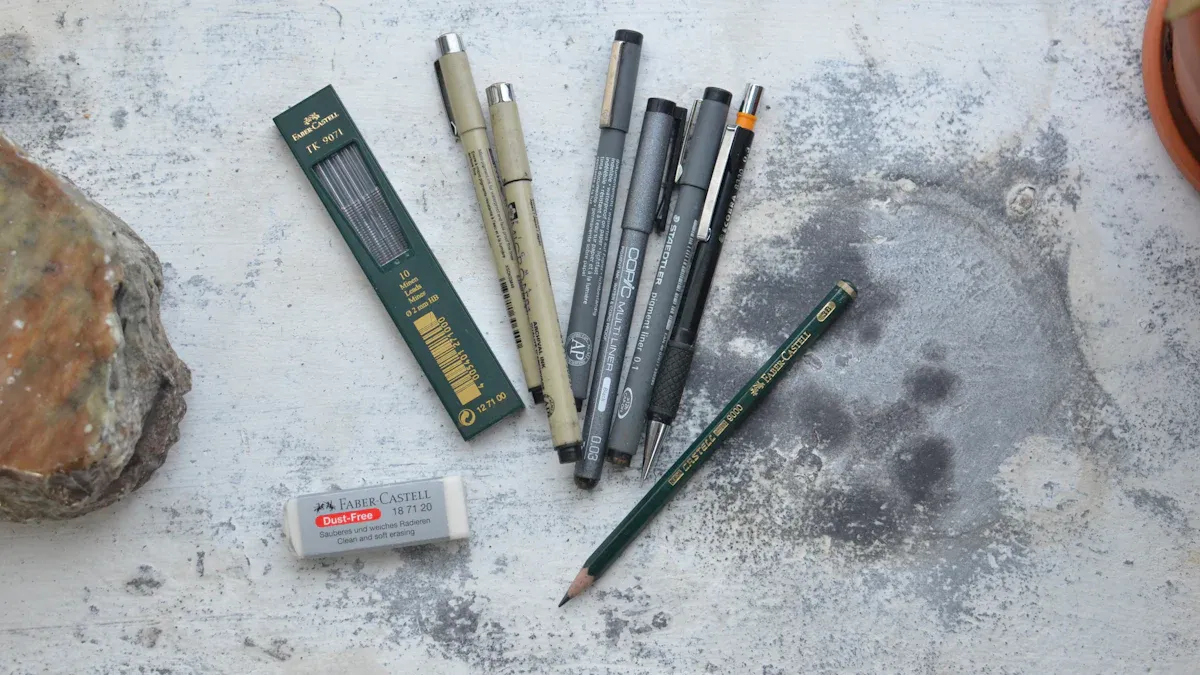
A graphite block gives you a new way to draw. You can create big, bold marks or soft, gentle shading. > Try holding a graphite block in your hand and feel the freedom it offers. This tool feels different from a pencil and lets you experiment with new styles.
Key Takeaways
- Graphite blocks let you create bold, wide marks and soft shading by using different angles and pressures, offering more freedom than pencils.
- Start with basic techniques like using the flat side for wide strokes and the edge for thin lines, then try blending and layering to add depth and texture.
- Keep your workspace clean and use simple tools like a kneaded eraser and blending stump to fix mistakes and reduce smudges, helping your art look its best.
Graphite Block Basics

What Makes Graphite Blocks Unique
You might wonder what sets a graphite block apart from other art tools. A graphite block feels chunky and solid in your hand. You can use the side to make wide, sweeping marks or use the edge for thin lines. This tool lets you cover a lot of space quickly. You can also create bold shapes or soft shading with just a twist of your wrist.
Tip: Try holding the block at different angles. You’ll see how the marks change!
Graphite Block vs. Graphite Pencil
You probably know how a pencil works. It’s great for details and writing. A graphite block, on the other hand, gives you more freedom. Here’s a quick comparison:
| Feature | Graphite Block | Graphite Pencil |
|---|---|---|
| Size | Large, chunky | Thin, small |
| Mark Making | Broad, bold | Fine, detailed |
| Cobertura | Fast, wide areas | Slow, small areas |
| Controlo | Loose, expressive | Precise, tight |
If you want to fill a big area or try loose sketches, reach for the block. For tiny details, stick with the pencil.
Other Graphite Tools for Artists
You have more options than just blocks and pencils. Artists also use:
- Graphite sticks (like a block, but thinner)
- Graphite powder (for soft shading)
- Mechanical pencils (for sharp lines)
- Water-soluble graphite (for painting effects)
Each tool gives you a different look. Try mixing them to see what you like best!
How to Use a Graphite Block

Basic Drawing Techniques
You can start simple with a graphite block. Hold it in your hand and try making marks on your paper. Use the flat side to make wide strokes. Turn the block and use the edge for thin lines. Try drawing circles, lines, and shapes. You will notice how each mark looks different.
Tip: Change the pressure of your hand. Press hard for dark lines. Use a light touch for soft, gray marks.
You can also try cross-hatching. Draw lines in one direction, then add lines over them in another direction. This builds up texture and value.
Blending and Layering
Blending helps you create smooth shading. After you make marks with your graphite block, use your finger, a tissue, or a blending stump to soften the edges. Move in small circles for the best results. You can layer more graphite on top to make areas darker.
- Start with a light layer.
- Blend it out.
- Add another layer for more depth.
If you want a soft look, keep blending. For a rougher texture, leave the marks as they are.
Covering Large Areas
A graphite block works great for filling big spaces. Lay the block flat and sweep it across your paper. You can cover a background in seconds. This saves time and gives your art a bold look.
Note: If you want an even tone, move your hand in one direction. Overlap your strokes a little to avoid streaks.
You can also use the block to create shadows or backgrounds behind your main subject. Try making a gradient by pressing harder at one end and lighter at the other.
Painting Techniques with Graphite Block
Did you know you can use a graphite block like paint? Dip a wet brush onto the block and pick up some graphite. Brush it onto your paper for a soft, watercolor effect. You can also wet the paper first, then draw with the block. The marks will spread and look dreamy.
- Use more water for lighter washes.
- Use less water for darker, stronger lines.
Callout: Always test on a scrap piece of paper first. Water can change how your drawing looks!
Painting with graphite opens up new ways to create art. You can mix drawing and painting in one picture.
Choosing the Right Graphite Block and Materials
Types of Graphite Blocks: Soft, Medium, Hard
You will see different types of graphite blocks in art stores. Each type feels a bit different when you draw. Soft blocks make dark, rich marks. Medium blocks give you a balance between dark and light. Hard blocks create lighter, fine lines. If you want bold shadows, pick a soft block. For sketching or light shading, try a hard one.
| Type | Mark Color | Best For |
|---|---|---|
| Soft | Dark | Shading, bold marks |
| Medium | Medium | Everyday drawing |
| Hard | Light | Fine lines, details |
Tip: Start with a medium block. You can always add a soft or hard one later.
Essential Materials: Paper, Erasers, Blending Tools
You need more than just a graphite block to get started. Good paper helps your marks look smooth. Try thick drawing paper or sketch pads. You also need an eraser. A kneaded eraser works best because you can shape it to erase small spots. Blending tools help you smooth out your shading. Use a blending stump, tissue, or even your finger.
- Drawing paper or sketch pad
- Kneaded eraser
- Blending stump or tissue
Beginner-Friendly Supplies
You do not need fancy supplies to begin. Grab a single graphite block, a sketch pad, and a kneaded eraser. These three items will let you try many techniques. If you want to blend, use a tissue from home. Keep it simple at first. As you practice, you can add more tools to your kit.
Note: You can always upgrade your supplies as you learn what you like!
Solving Common Graphite Block Issues
Reducing Graphite Shine
You might notice your drawing looks shiny in some spots. This shine happens when you press hard or use soft graphite. If you want a matte finish, try these tricks:
- Use lighter pressure when you draw.
- Pick a harder block for lighter marks.
- Blend with a tissue or blending stump to even out the shine.
- Place a piece of clean paper under your hand to avoid pressing too hard.
Tip: You can spray a light layer of fixative over your finished drawing. This helps reduce shine and keeps your work safe.
Preventing Smudges
Graphite can smudge easily. You may find marks on your hand or across your paper. To keep your drawing clean, follow these steps:
- Work from top to bottom if you are right-handed, or bottom to top if you are left-handed.
- Rest your hand on a scrap piece of paper.
- Use a fixative spray when you finish a section.
A kneaded eraser can also pick up unwanted smudges. Just dab it gently on the spot.
Fixing Mistakes
Mistakes happen to everyone. If you want to erase a mark, use a kneaded eraser. Shape it into a point for small areas. For bigger mistakes, try a vinyl eraser. You can also lift off some graphite by gently rubbing with a clean tissue.
Remember: Sometimes a mistake can turn into a cool new idea. Don’t be afraid to experiment!
Practical Tips for Graphite Block Beginners
Building Confidence Through Practice
You might feel nervous when you start using a new art tool. That’s normal! The best way to get better is to practice a little every day. Try setting aside ten minutes to draw simple shapes or lines. You can fill a whole page with circles, squares, or even random marks. Each time you draw, you learn something new. Mistakes will happen, but they help you grow as an artist.
Tip: Keep your first drawings. Later, you can look back and see how much you’ve improved!
Trying Different Techniques
Don’t be afraid to experiment. You can try drawing with the side of the block for wide marks. Use the edge for thin lines. Try blending with your finger or a tissue. You might even want to add water for a painting effect. Mix fast, bold strokes with slow, careful shading. Every technique gives you a new look. You will find your favorite style by trying many things.
- Draw with different pressures.
- Blend with different tools.
- Layer light and dark marks.
Keeping Your Workspace Clean
Graphite can get messy. You might see dust on your hands or table. Keep a damp cloth nearby to wipe your hands. Use a scrap piece of paper under your drawing hand to stop smudges. Clean your tools after each session. A tidy workspace helps you focus on your art.
Note: Wash your hands before touching other things. This keeps your art and supplies clean.
You now know the basics of using a Graphite Block. Try new techniques, have fun, and don’t worry about mistakes. Ready to start? Grab your block, pick some paper, and make your first bold mark. Every drawing helps you learn and grow as an artist!
FAQ
How do you store a graphite block?
Keep your graphite block in a small box or pouch. This stops it from breaking or making a mess in your art bag.
Can you sharpen a graphite block?
You cannot sharpen a graphite block like a pencil. If you want a sharp edge, just break off a small piece or use sandpaper.
What paper works best with graphite blocks?
Pick thick drawing paper or a sketch pad. Thin paper can tear or wrinkle. Heavy paper lets you blend and erase easily.


